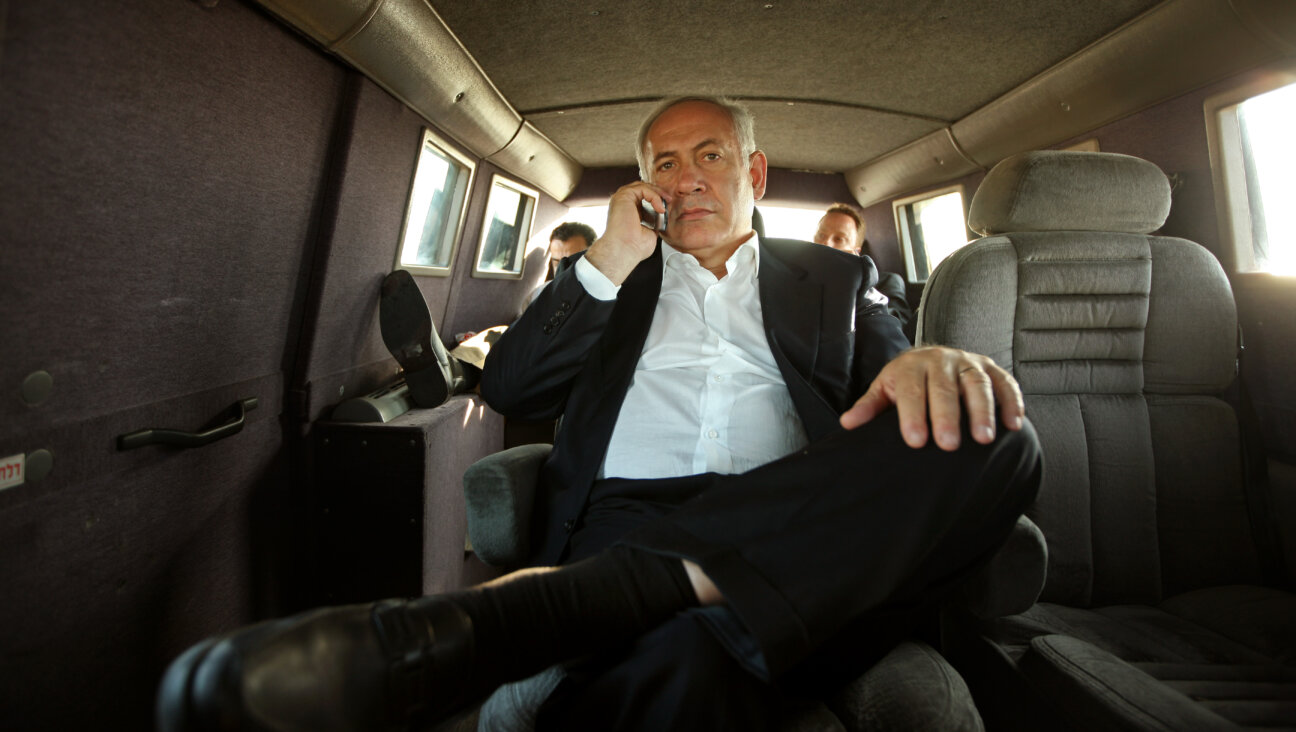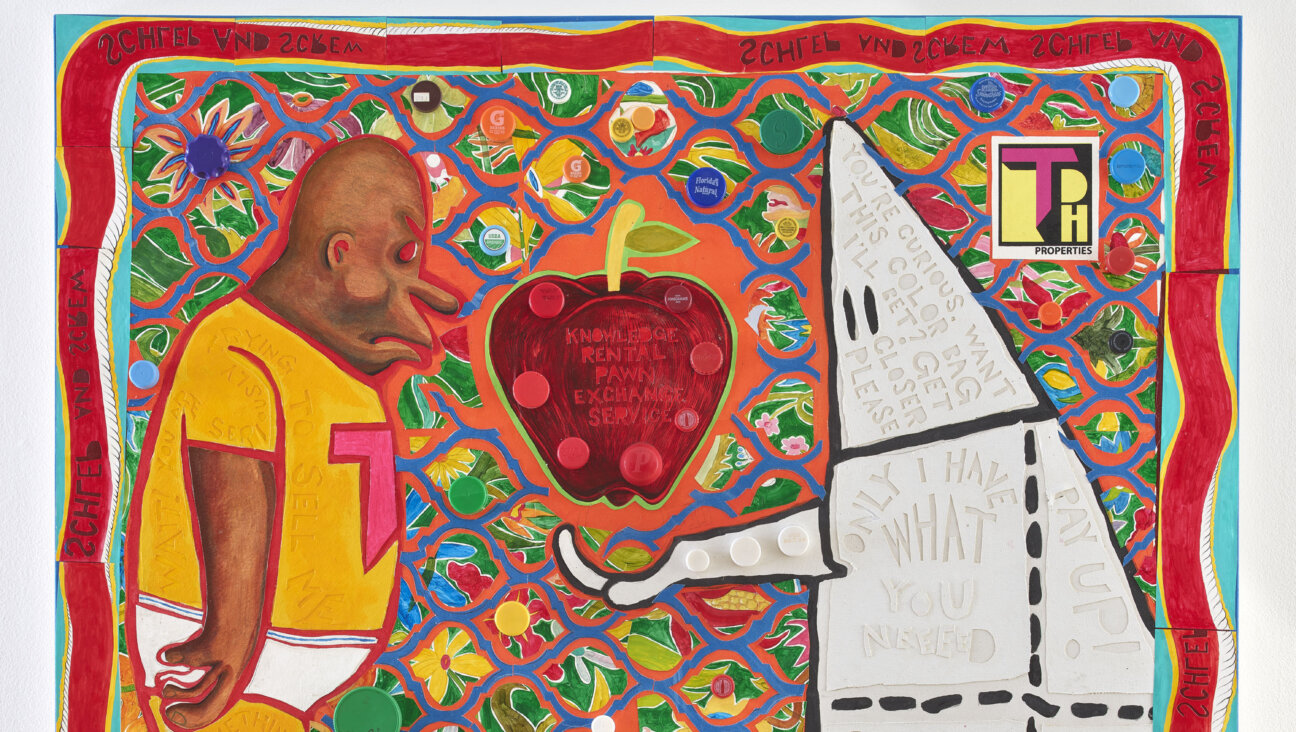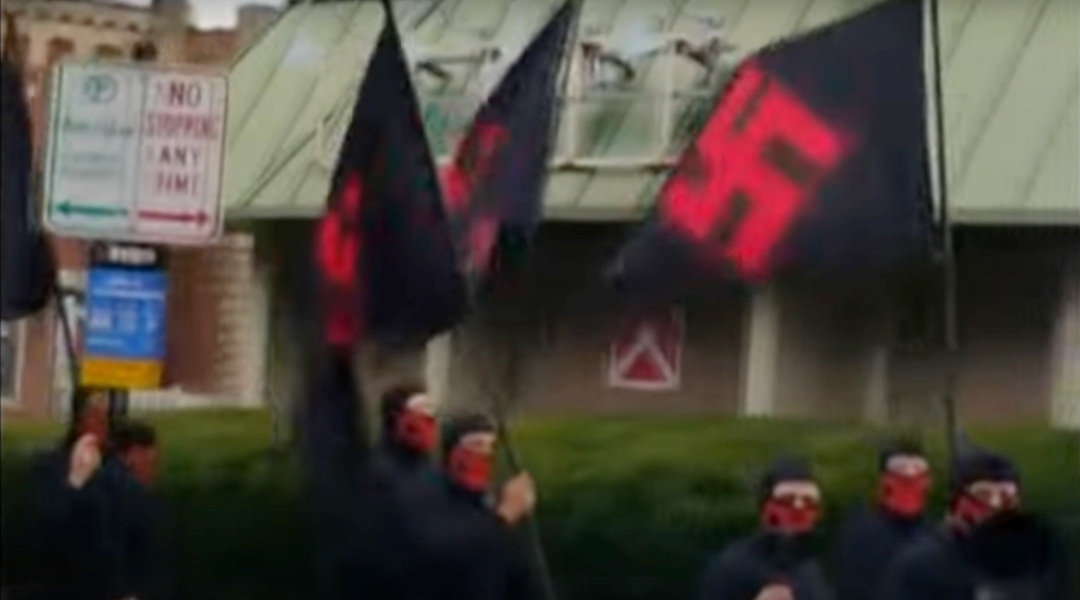The Secret Jewish History of Stanley Kubrick

2001: A Space Odyssey Image by Courtesy of Contemporary Jewish Museum
For the first time since it embarked on an international tour, “Stanley Kubrick: The Exhibition” is showing at a Jewish museum. San Francisco’s Contemporary Jewish Museum proves to be an awesome setting for a complicated, Jewish artist whose films continue to entertain, haunt and provoke.
Few filmmakers have been parsed, praised and criticized as much as Kubrick. Qualities not in dispute are his ambition, invention and meticulous research. Kubrick himself is not an easy subject. His career began when he was 17, and ended with his sudden death at the age of 70 at his home in England. Hours before his heart attack in 1999, Kubrick had delivered the final cut of his film “Eyes Wide Shut.”
Since the establishment of his archives in London and this extensive exhibition, there has been increased interest in Kubrick’s creative process and choices in actors, music, colors, script and special effects. Although not an observant Jew, he was born into a middle-class, Jewish home in the Bronx, and his ancestors were Eastern European. After the Bronx, Kubrick lived in Greenwich Village, where New York Jewish intellectuals, who became friends and colleagues and sources of inspiration (In “The Shining,” Wendy is seen reading “The Catcher in the Rye.”).
The exhibition takes up the entire second floor of the CJM, where the hallway is lined with a dizzying array of movie posters, from “Fear and Desire” to “Killer’s Kiss” to “Lolita,” the preamble to an onslaught of all things wild and Kubrick.
During eight months of preparation for the exhibit, associate curator Anastasia James carefully cut Deutsches Filmmuseum’s 1,200 items, including costumes and props, to 1,000 to fit the space. While some museums arranged the show thematically, James explained that Kubrick’s oeuvre is best viewed chronologically.
Kubrick’s professional career began when he was a student at William Howard Taft High School in the Bronx, an aspiring photographer who happened upon a profound image — the sad face of a newspaper vendor on the day Franklin Roosevelt died. Shortly thereafter he joined the staff at Look magazine, where he worked from 1945 to 1950. Front and center in the exhibit is the Graflex Pacemaker Speed Graphic camera, similar to the one used by Weegee, the hard news photographer Kubrick greatly admired. Later, Weegee was invited on the set of “Dr. Strangelove or: How I Learned to Stop Worrying and Love the Bomb” to shoot stills and help Peter Sellers with his accent.
The centerpiece of the show is an eight-minute video projected on one interior wall, featuring intense scenes from “2001: A Space Odyssey,” “The Shining,” “Full Metal Jacket,” and “Eyes Wide Shut.” I found myself stopped in my tracks, just like little Danny in “The Shining,” who stops his Big Wheel to try the door knob of notorious Room 237.
The song “Surfin’ Bird” can be heard throughout the exhibit, and the viewer is hypnotized by the scene in “Full Metal Jacket” where the camera crew is filming the war as that tune plays. Clearly, technically savvy Kubrick would not be surprised that live-streaming the most riveting, graphic and personal events has become commonplace. As has violence.
Simultaneously fascinated and horrified by war, death and Nazi Germany, his films, and consequently the gallery, are filled with sounds of gunfire and explosives, the sight of firing squads, rifles, machine guns, tanks and bombs.
Geoffrey Cocks, who wrote “The Wolf at the Door: Stanley Kubrick, History, & the Holocaust,” says Kubrick was agnostic but identified as Jewish and “had a healthy interest in questions not answerable.” Even though he often turned away from overt Jewish themes and tended to write Jews out of his stories, thinking they would make his movies less commercial at the time, there are many “indirect” references to the Holocaust and the Nazi’s “Final Solution” in “The Shining,” “in a sense the most Jewish” of Kubrick’s movies. Cocks also believes that scholarly research reveals more Jewishness in “Eyes Wide Shut,” Kubrick’s final film, which was based on “Dream Story” by the Austrian author Arthur Schnitzler. Cocks hopes renewed focus on the director will encourage audiences to watch the films “over and over again” in order to catch small, telling details. “Most people have minimal understanding of his films. They write him off as a misanthrope,” Cocks said.
Whether the unfinished “Aryan Papers,” based on Louis Begley’s semi-autobiographical novel “Wartime Lies,” would have been Kubrick’s most Jewish film, no one knows. Still, he poured an enormous amount of time and energy into the project. He’d been working on it for 20 years, according to his stepdaughter, Katharina Kubrick.
The section of the exhibition devoted to “Aryan Papers” includes historical photos of Jewish prisoners in death camps and in the Warsaw ghetto, as well as research photos shot by assistants scouting the Czech Republic, Slovakia and Poland. A color-coded production strip board lists actors, locations, costumes and makeup, evidence of Kubrick’s painstaking attention to detail.
He was both a photographer and a cinematographer, and the museum showcases cameras and lenses, such as the Zeiss lens used by NASA that Kubrick used in “Barry Lyndon.”
In conjunction with this dazzling exhibition (on view through October 30), the CJM has been offering panels, tours and talks, including a conversation between Cocks and Nathan Abrams, author of “The New Jew in Film: Exploring Jewishness and Judaism in Contemporary Cinema,” and Marat Grinberg, co-editor of “Woody on Rye: Jewishness in the Films and Plays of Woody Allen” and an upcoming book on “Aryan Papers.”
Cocks said Kubrick was known to be very depressed while working on “Aryan Papers,” and it’s more plausible that he, not the studio, decided not to proceed. He knew the subject was too massive to fit into any one film. On the other hand, Abrams believes Kubrick had already made a Holocaust film — “Dr. Stangelove.” Grinberg said Kubrick perceived the world as divided into Jews and non-Jews, and was “deeply interested in his own Jewishness and what that meant.”
Aside from on-site programs, the museum has partnered with other local arts organizations to show Kubrick’s films in San Francisco theaters. Screenings culminate in October, when the San Francisco Symphony performs the score as audiences experience Academy Award winner “2001: A Space Odyssey.”
Kubrick’s co-producer and brother-in-law, Jan Harlan, claims “2001” is Kubrick’s most Jewish film, one that asks the most penetrating questions about the universe and the existence of God.
In regard to “2001,” Cocks also points out that Kubrick rejected Rousseau’s theory of civilization, but thought, “we’re not fallen angels, but risen apes.”
Lisa Amand is a San Francisco-based writer.
A message from our CEO & publisher Rachel Fishman Feddersen

I hope you appreciated this article. Before you go, I’d like to ask you to please support the Forward’s award-winning, nonprofit journalism during this critical time.
We’ve set a goal to raise $260,000 by December 31. That’s an ambitious goal, but one that will give us the resources we need to invest in the high quality news, opinion, analysis and cultural coverage that isn’t available anywhere else.
If you feel inspired to make an impact, now is the time to give something back. Join us as a member at your most generous level.
— Rachel Fishman Feddersen, Publisher and CEO






















